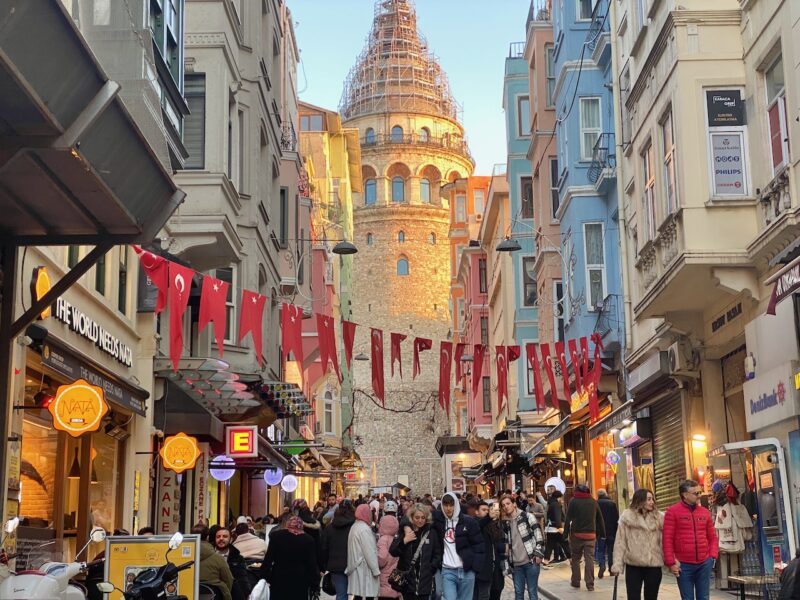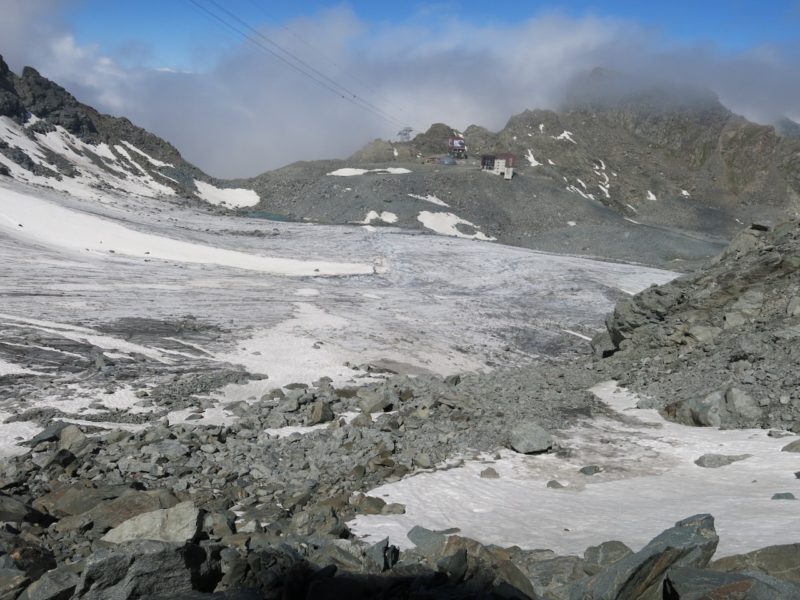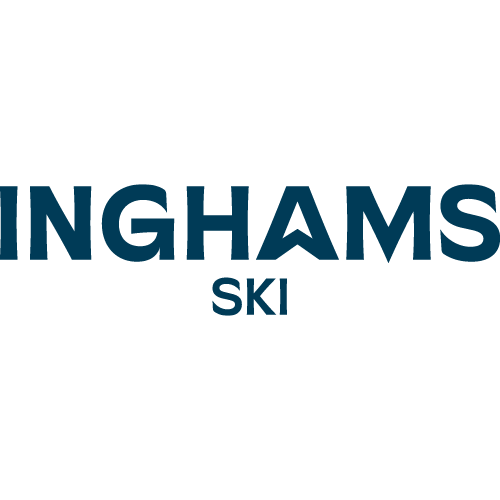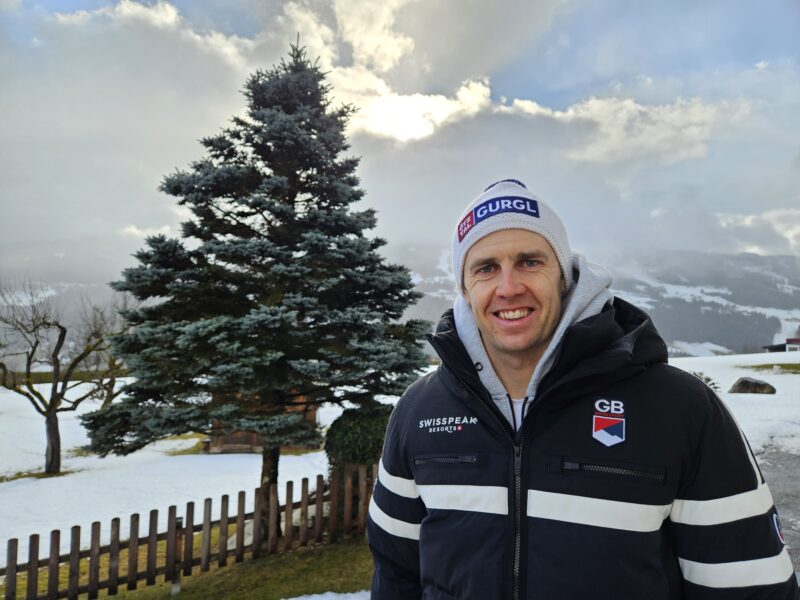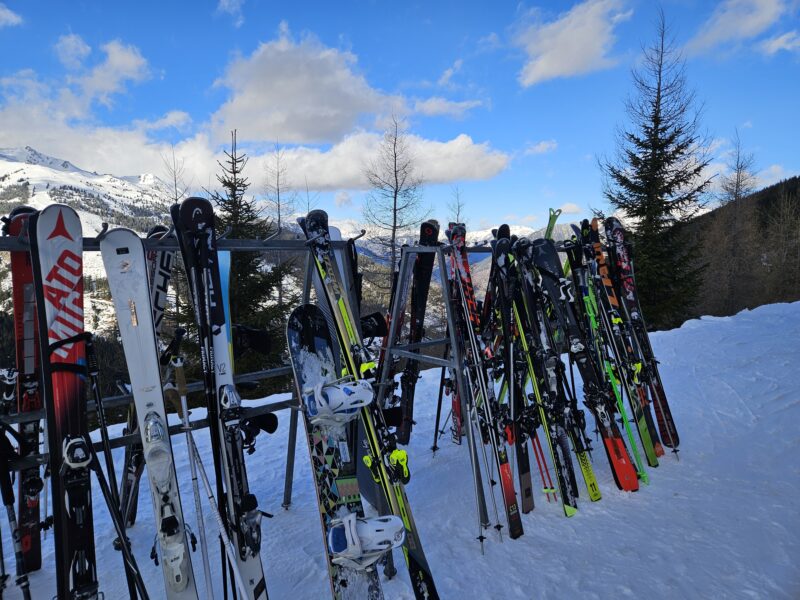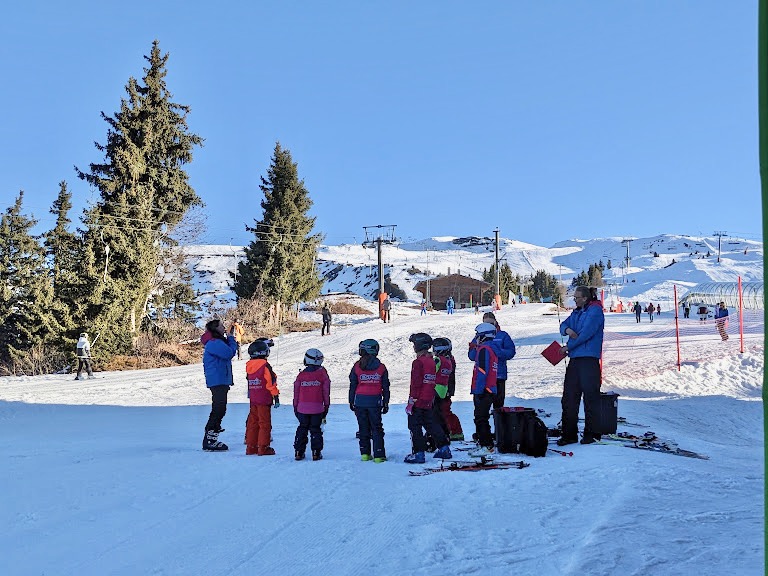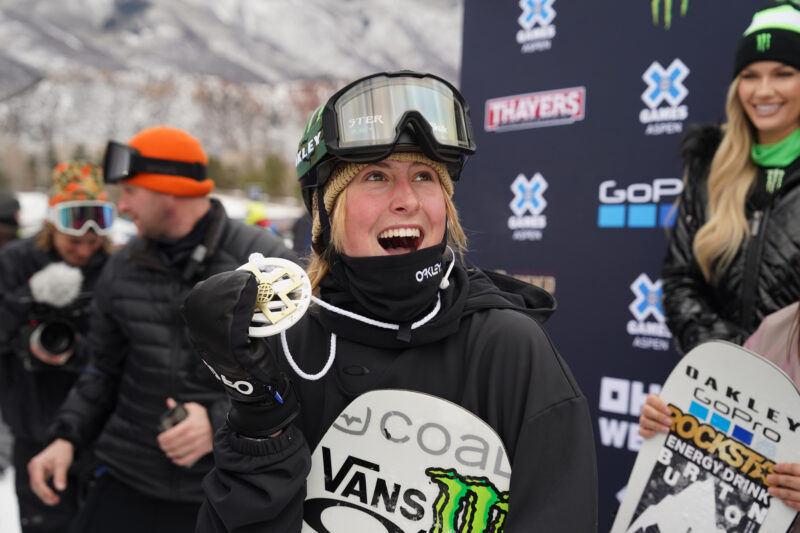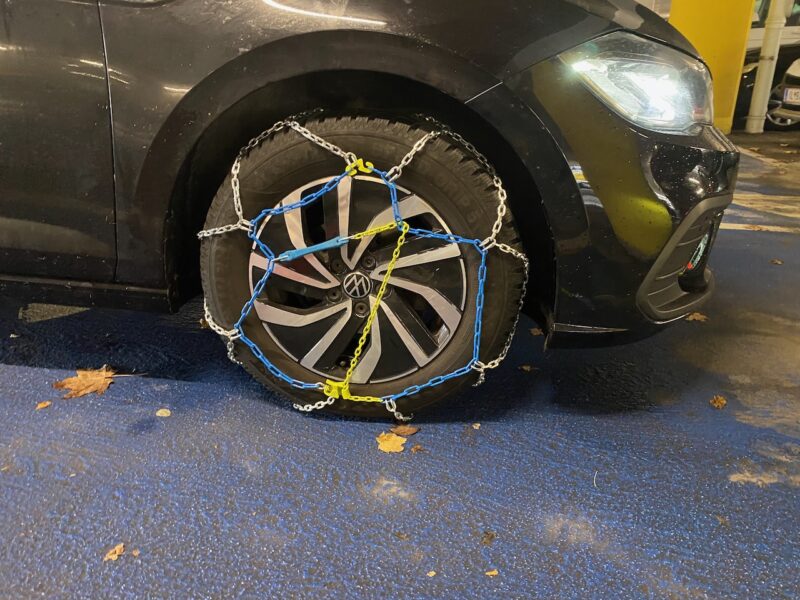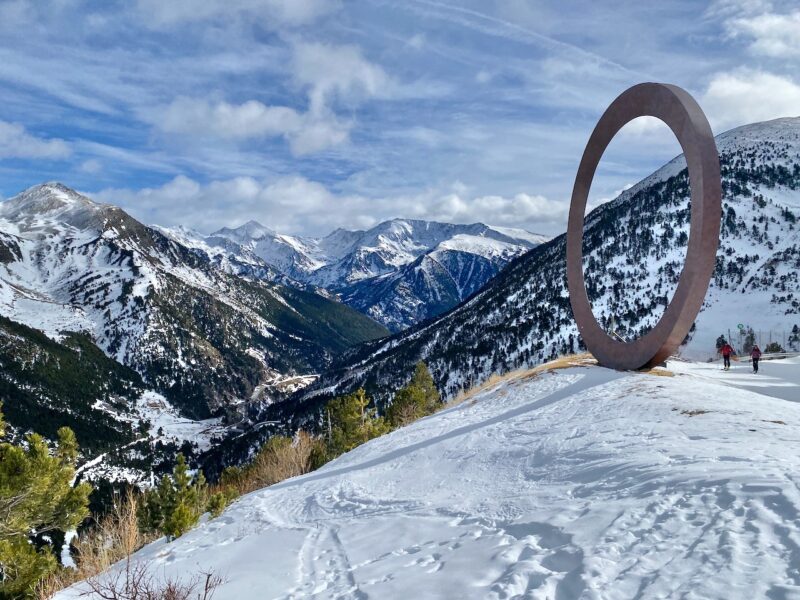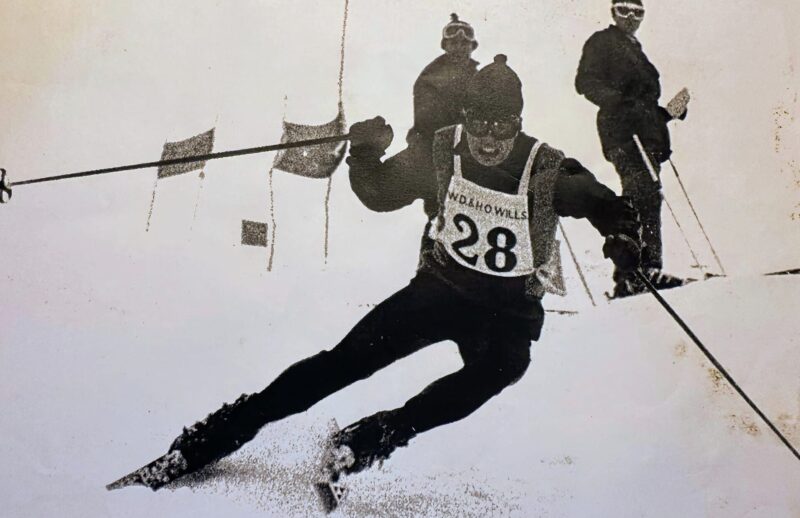What Might a Ski Holiday Look Like Next Winter? Part 2
21st May 2020 | James Cove, PlanetSKI editor
Last modified on May 20th, 2021
In the second of our special reports we look at what life might be like in a socially distanced ski resort. It will be an altogether different experience.
Although it may not seem like it, we skiers & snowboarders were fortunate when it came to the timing of the impact in Europe of the coronavirus pandemic.
It came towards the end of the season, mid-March, with most of the winter over.
If it had started its spread in Europe in November or December it would have been a very different story.
Or even a few weeks earlier over the half-term period.
The resorts now have time to prepare for the 2020/21 season which is likely to be very different to a normal winter.
People have time to educate themselves and make decisions accordingly.
Ski resorts will have to follow the rules and advice laid down by their central or regional government.
It won’t actually be up to individual resorts – they will have to follow the rules.
We have been speaking to many ski resorts and ski areas in the Alps to gauge what things might, and we stress might, be like.
All say the picture is unclear and that “a lot of question marks still remain on the security measures that public places (hotels, restaurants, shops) will have to take beyond masks, distance, hygiene measures”.
There is also a fear that “many businesses won’t be able to open again, due to the financial losses of the past months”, and some believe that “they won’t survive with the new restrictions that will be imposed.”
Others are more upbeat saying “one thing that is certain is that we will be skiing next winter, but how we do it is another matter altogether.”
“We are working hard and planning ahead, looking closely at what happens in the resorts this summer and how that can be moved onto next winter,” said another.
In this article PlanetSKI once again looks into its crystal ball.
In our first special report we looked at travel – getting to a resort in the first place.
What might a ski holiday look like next winter?
Lower down this article we look in detail at what the experience may be like in the resort village and up on the slopes.
Plus whether we may change where we ski and, most importantly, the use of SMART technology.
First, though, it is perhaps worth looking at resorts that have already reopened and those in the southern hemisphere that will fire up their ski lifts next month.
What are they doing in practical terms?
New Zealand is set to begin opening its ski fields at the end of June.
It has just reduced its alert status to Level Two and the ski resorts are preparing to open after being given a special exemption.
These are the current rules for New Zealand as announced:
– Physical distancing required
– Contact tracing in place
– No limit on number of people allowed at once
– Resort restaurants to follow hospitality limits of 100 people maximum, seated and served separately
– Increased cleaning and sanitation
The measures put in place, and more importantly how they work, will be watched with interest and likely be replicated in the Alps.
We reported earlier in more detail:
New Zealand ski areas step up winter preparations
Here is what Timberline Lodge in Oregon, USA, did as it reopened earlier in May:
- All visitors must make online reservations in advance, a process that will include a coronavirus questionnaire
- Reservations cannot be made more than 24-hours in advance and will be sold on a first-come, first-served basis
- The ski area will be capped at an unspecified number of reservations per day to control crowds
- Operations on the mountain will be limited to two chairlifts, with lift lines that incorporate six feet of social distance
- Skiers are allowed to ride chairlifts only with people who they came with, or else ride single or double using opposite sides of the chair
- All skiers must wear masks, gloves and goggles or glasses
“It’s going to be a good experience, but it’s definitely going to be different,” said Timberline spokesman John Burton to local media ahead of the opening.
The resort says only experienced skiers should come and they should exercise restraint and caution to avoid injury on the slopes.
There was no seating in the Day Lodge.
The rental shop along with most of the bars and restaurants were shut.
The Cascade Dining Room and Y’Bar were open for takeaways.
Anyone who did not adhere to Timberline’s safety guidelines was threatened with ejection from the area for the day or the entire season, or face a notice of trespass.
So, what might it look like next winter in the Alps with coronavirus restrictions in place?
IN RESORT – IN THE TOWN/VILLAGE
Once in resort people will need to follow rules and regulations and, let’s face it, we are used to social distancing.
It is the new norm.
The experience will likely be altogether different – no rowdy apres ski scenes, tables spaced out in restaurants with hotels and chalets adhering to social distancing requirements.
Expect a big rise in self-catering holidays – probably with self-drive.
It is likely people will be required to be 2m apart except for those who have been living in the same household.
Austria allowed bars and restaurants to open on May 15th with social distancing in place.
Hotels in Austria are likely to be allowed to reopen on May 29th and we will be watch with interest what measures are used.
It is useful to look at what other nations are doing.
In Thailand some people eating in restaurants, if they are not from the same household, are eating behind clear plastic screens.
In Amsterdam a waterside vegan restaurant, Mediamatic Eten, has come up with its own solution…
And it is useful to see what other sectors of the travel industry are doing.
The breakfast help-yourself buffet is a staple of hotels and chalets, but may become a thing of the past.
Cruise lines are expected to ditch the whole buffet dining concept when its business restarts, possibly in mid-July.
Royal Caribbean said new health and safety measures being introduced to avoid the spread of coronavirus will see the end of self-serve dining.
It may be replicated in ski resorts.
And in resorts what about apres ski?
Essential for some on their annual ski holiday, but apres will likely very different.
Scenes like this are unlikely to be repeated in the near future.
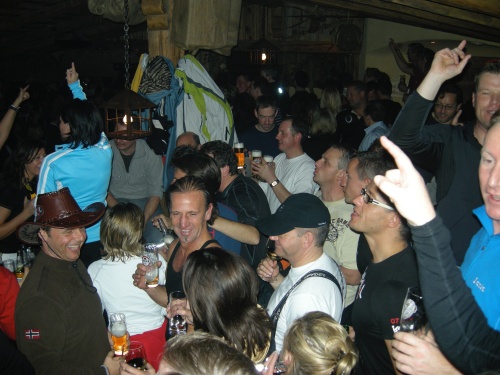
Apres ski. Image © PlanetSKI.
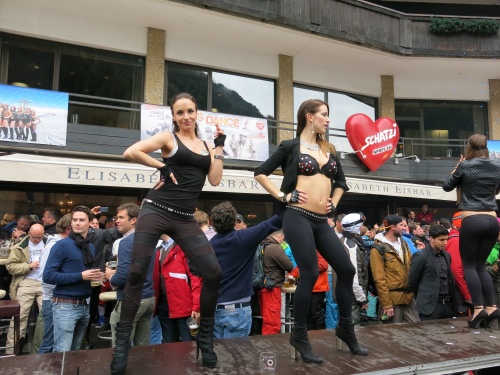
Apres ski. Image © PlanetSKI.
One only has to look at the recent flare up in Seoul in South Korea in the nightspot area.
More than 100 people became infected after the country started to relax restrictions.
South Korea, through extensive testing and contact tracing, had managed to bring daily cases down to single digits without enforcing a national lockdown.
The virus spreads in crowded indoor bars and there will be tight restrictions.
No resort wants to open and then be responsible, or be seen to be responsible, for spreading covid-19.
Just ask the ski resort of Ischgl in the Tirol in Austria that has a mountain to climb to restore its reputation after accusations of assisting the spread of the virus by alleged inaction at an early stage.
1,800 Covid-19 Cases Linked to Ischgl
Ischgl Under Investigation over Claims it Did Not Do Enough to Halt Spread of Coronavirus
IN RESORT – UP ON THE SLOPES
Once on the slopes, then skiing and snowboarding brings natural social distancing, most of the time.
As one of our regular readers, Carol Chambers-Workman, put it “love the idea of social distancing on the slopes, no idiots crashing in to me.”
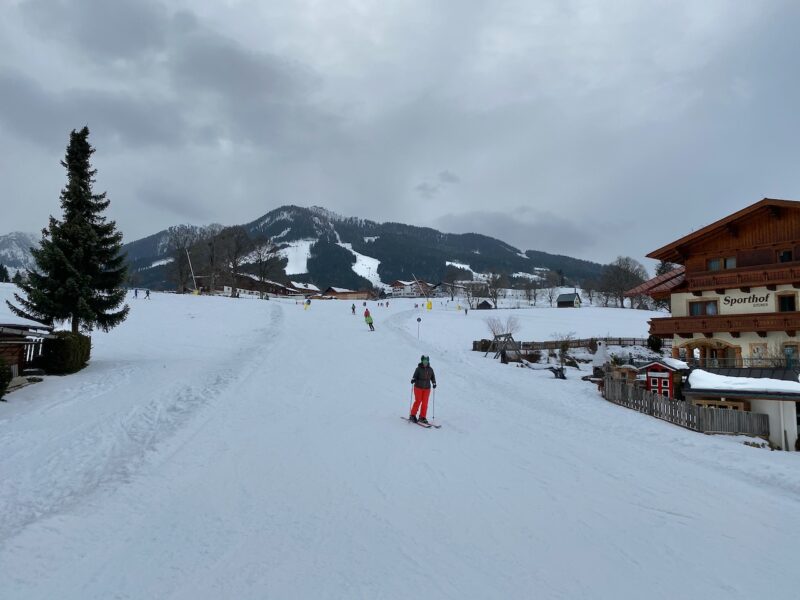
Skiing with social distancing. Image © PlanetSKI.
But getting to the slopes requires queues and ski lifts.
“Our ski lifts will now open on June 8 in line with the government advice and with new social distancing measures in place – families will be able to travel in the gondolas together but individuals that don’t know each other will be limited to one person per gondola,” said Pierre-Henri Mainetti, marketing director at Crans-Montana Tourism in Switzerland.
The French resort of Morzine says this summer each chairlift will need at least one space between people on the lift.
Ski schools will have to adapt with the class sizes and people will have to spread out more in the park.
Mountain restaurants will also need to adapt – both outside and inside.
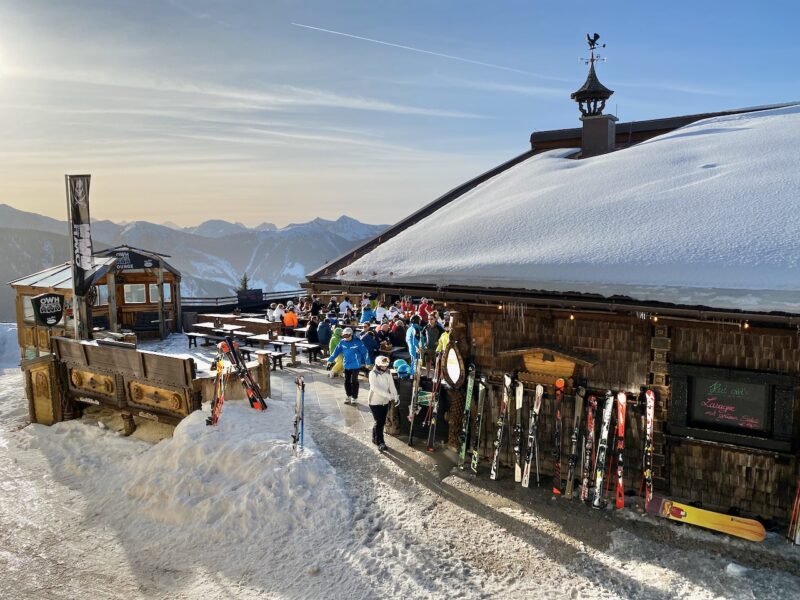
Lunch at mountain restaurants will be different. Image © PlanetSKI.
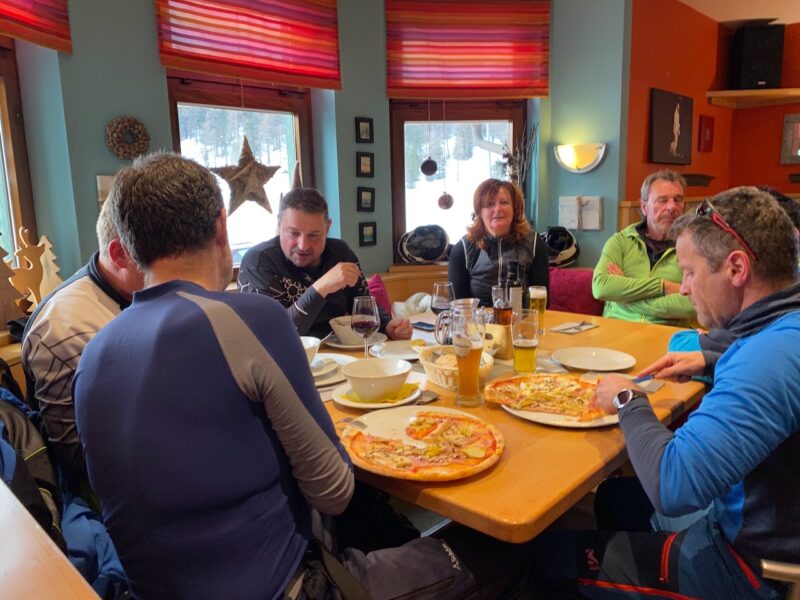
Lunch at mountain restaurant will be different. Image © PlanetSKI.
Expect a rise in picnicking.
Many resorts rely on crowd-pulling events to bring in large numbers of skiers and snowboarders.
From music festivals to sporting events.
They may be impossible to run on a cost-effective basis.
WILL WE CHANGE WHERE WE SKI?
Some may feel the mega-resorts in the Alps are not suitable with 30,000+ tourist beds in a small concentrated area.
They may look at smaller resorts with fewer people and more space.
If the snow is good next winter then Scotland may see a rise in visitors as people in the UK can simply drive to the resorts rather than fly.
Others may think a well-organised Club-Med style experience with everything concentrated in one place is the way to do it.
With ski in/ski out so there is no need to take a bus or get into a cable car to access the slopes.
Many people might decide the best way to go skiing is to do it independently rather than with a tour operator.
If they fly they can take a private airport transfer rather than getting on a tour operator’s transfer service.
People may look at how an individual alpine country has dealt with covid-19 and the amount of cases they have had.
Austria (population 9m) and Norway (population 5m) are stand outs.
Austria has had 16K confirmed cases and 633 deaths.
Norway has had 8K confirmed cases and 243 fatalities.
France (population 67m) has had 144K confirmed cases and 28,132 deaths.
Norway is already pushing its message for next winter.
Solitude, getting back to nature and space in the mountains.
“We believe more than ever we have a great chance in attracting even more guests than usual to our ski resorts next year, as people will choose resorts with more space, uncrowded and which we are already famous for,” said the CEO of Norway Home of Skiing, Trevor de Villiers.
“This is illustrated in our most recent marketing video.”
“We sincerely believe that for those many holidays makers missing out on their well-deserved Summer holiday this year, we may be appealing, as they can enjoy ticking off all those big dream bucket-list items, such as Husky Sledding, Fjord Safaris, Northern Lights, Reindeer Sledding, Snow Mobiling and much much more, whilst enjoying their Winter Ski holiday with us.”
If one resort, or country is seen as being safer than others it will no doubt reap the rewards.
And this is where we move on to perhaps the biggest change – the use of SMART technology.
Each resort may make different uses of the technology.
ANTI-CORONAVIRUS TECHNOLOGY – WILL WE SEE SMART SKI RESORTS?
Apps and other technological developments are likely to have a huge role to play next winter.
They are more efficient, more dynamic, and often are more cost-effective that many human measures of checking for likely coronavirus risks.
With social distancing and limits on crowd numbers, this is where SMART technology comes in.
An investment in SMART technology in ski resorts could pay dividends, huge dividends.
SMART tourism could be the key for to reopen the tourism industry and begin the process of financial recovery following Covid-19.
Some see it as a cost-effective and innovative in this time of crisis.
Technological solutions can be used to monitor the number of people in a defined area.
“Already destinations are requiring online payment and advance reservations in order to avoid queues at the entrance but they can go much further than this,” said the Marketing Director of WishTrip, Sarah Hine.
“Once inside, they should be offering visitors varied digital trails and experiences which encourage them to spread out and not crowd together at the most well-known spots.”
Some of the information in this technology section comes from an interesting article from Wish Trip.
In ski resorts live-maps could show where skiers and snowboarders are at any given point in time, and allow staff to intervene in the event that they spot overcrowded spaces.
This could be applicable to lift queues, areas at restaurants and much else besides.
And they can also be used by visitors to let them see the location of other people.
This may allow them to decide which lift to head to and plan their routes to avoid close contact, in much the same way that social GPS apps help drivers avoid traffic jams.
Push notifications allow destinations to send reminders directly into visitors’ mobile phones reaching them wherever they are.
Alerts grab people’s attention far better than posted signs.
It is also possible to prominently mark hand-washing and sanitising stations directly in GPS maps and to send location-triggered alerts when users are close so that travellers can easily find them.
There are a whole range of ways SMART technology could be used in ski resorts.
“In many ways, SMART tourism was designed for this moment. It centralises operations which allows fewer employees to serve more guests – just what social distancing requires,” said Sarah Hine.
“It helps visitors get the information they need faster, which can be critical in uncertain times.
“And it provides more opportunities for sales and promotions which is never more important than when destinations are under the kind of financial pressure they are currently experiencing.”
Here at PlanetSKI we will be keeping a close eye on the development of SMART technology in ski resorts.
And will keep you updated on what a ski holiday next winter might be like as the situation and the solutions are changing rapidly.
We remain positive there will be skiing next winter, but it will be somewhat different.
However the key reason we go to the mountains is to ski and as long as the snow falls that will be the same as ever.
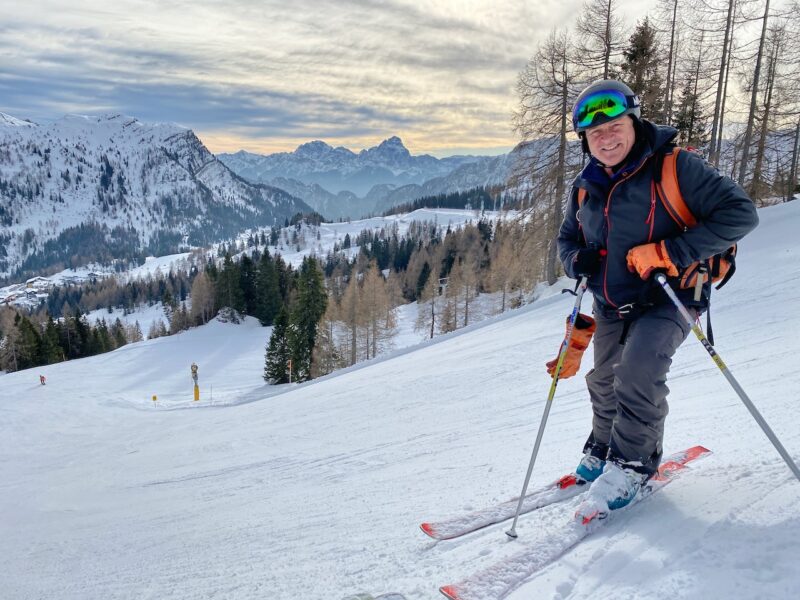
PlanetSKI in the mountains. Image © PlanetSKI.
And as one of our sources said at the beginning of this article “one thing that is certain is that we will be skiing next winter, but how we do it is another matter altogether.”
Watch this space…
And if you have any comments, thoughts or information to share with other readers please feel free to comment over on the PlanetSKI Facebook page.

